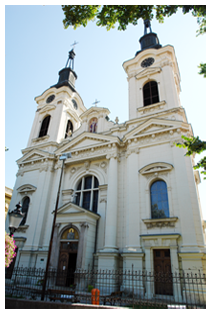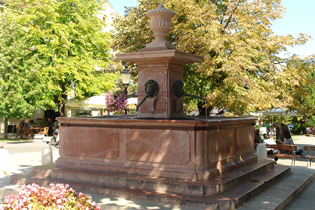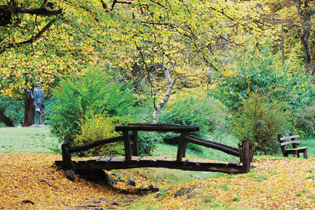Karlovci Grammar School was founded on the 11th of October 1791. The Patronage and Guardianship of the high school funds with Metropolitan Stratimirović at the head took care over the school everyday life and functioning. The Grammar school opened its doors to the students on the 1st of November 1792. and is the oldest Serbian Grammar School.
The oldest Serbian Theological School was established by metropolitan Stevan Stratimirović in 1794. It is the second oldest in the world, giving precedence only to the Kiev Theological school. A couple of years later, in 1798. Metropolitan Stratimirović also founded a boarding school to provide room and food for the underprivileged theologians and high school students.
The Patriarchy residence is a magnificent edifice built at the end of the nineteenth century at the initiative of patriarch Branković and it represents a major architectural undertaking of the time. The building was completed by the end of 1884. The Residence also houses the chapel of St. Dimitry which contains iconostasis, work of Uroš Predić, one of the most famous Serbian Realist painters.
The Royal Garden is one of the oldest botanical gardens in our country and it represents a natural monument of garden architecture. It was created in 1848. under personal engagement of the patriarch Josif Rajačić as a means to provide better quality of nature studies to the high school students outdoors.

Sremski Karlovci takes its special place in history in the period of 13-15. Of May 1848. when the May Assembly was held and the Serbs proclaimed the creation of Serbian Vojvodina (from Srem, Backa, Banat and Baranja), the entering into political alliance with the Croats "based on freedom and perfect equality" with the recognition of the Romanian nationality and elected Josif Rajačić patriarch and Stevan Šupljikac the archduke.
Karlovci obtained its present appearance at the end of the nineteenth century when several capital facilities were built thanks to patriarch Georgij Branković. As the Patriarchy was moved to Belgrade, Karlovci loose their former significance.
The Orthodox Cathedral was built in 1762. on the foundations of an old church from the sixteenth century and is dedicated to Saint Nicholas. The church carries a distinct baroque style within its three-aisled structure with two large steeples dominating the front.
The majestic iconostasis from the eighteenth century combines the works of two painters from Karlovci, Todor Kračun and Jakov Orfelin. The iconostasis is one of the most representative works of Orthodox art of the time and one of the most important works of art in Vojvodina. In the late nineteenth century, the famous Serbian painter Paja Jovanovic painted several compositions dedicated to biblical figures, as well as a couple of paintings depicting Serbian history which proudly decorate the walls of the church.
The fountain 'Four Lions' occupies the main part of the central square and was built in 1799. Legend has it that when one drinks the water from this fountain, one is sure to return and stay in Sremski Karlovci.
Near Sremski Karlovci on the gentle slopes of Fruška Gora, lies the most famous picnic ground Stražilovo. Branko Radičević, one of the greatest poets of Serbian Romanticism, is buried here. Branko's remains were transferred from Vienna to Stražilovo on the 22nd of July 1883. following the initiative of the Karlovci Grammar school students. Due to the fame and importance of the poet Branko Radičević this is also a famous place of pilgrimage for the pupils and the poets.


Present-day Sremski Karlovci is an independent municipality and, thanks to its glorious past, remains an important cultural and spiritual centre of the Serbian nation.


